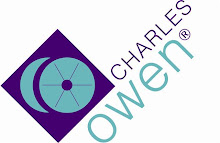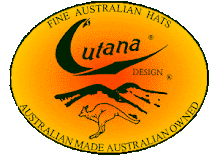This was near the site of Carson Sink Pony Express Station. Originally built by Bolivar Roberts and J Kelly in March 1860, it was constructed of adobe using alkali mud from the shore of Carson Lake, as there was no rock or wood available nearby. Not a pleasant job as their feet swelled up from tramping the mud in bare feet to create the right consistency! By October Burton describes "a frame house inside an adobe enclosure, and a pile of weed and a stout haystack". Very little now remains of the station but in its time it was quite substantial. Pony Bob Haslam reported on his famous ride in May that there were fifteen armed men and as many horses residing there.
However Burton complained of the lack of hospitality, as the "surly cripple" at the station refused to supply them with wood for a fire, or even a cup of water. With regard to the latter they were "told to fetch it from the lake which was not more than a mile off, though as the road was full of quagmires it would be hard to travel at night" Burton chose to forgo his usual haystack to sleep on a side of bacon in the wagon, "deeply regretting that the Mormons do not extend somewhat further westward".
Lady and I set off west on the day after Burton set off from this spot one hundred and fifty-four years before on October 18th 1860, though we were headed for Hooten Wells, where a Pony Express station did not exist in Burton's day.
We followed a sandy trail partly winding through low hills of the oddly named Dead Camel Mountains for about nineteen miles..
until we reached Hooten Wells. No sign of Lucy and no cell reception, but I found the water containers left by the Cauhapes hidden behind a low wall. Frustratingly I then discovered that I had forgotten my Ortlieb bucket so could not water Lady anyway. However the recent heavy rain had left a rather muddy pool of water - but what was that wily creature skulking in the bushes on the other side?....
..and in case you did not catch it, here is a still I made earlier...
Looking across the Churchill valley to Churchill Butte. The ruins of Desert Wells Pony Express station are about one mile to the south-west of this point - probably the original station before the route moved further north in 1861.
I decided to carry on riding towards the main road at Bucklands as there was still no Lucy, but it soon became apparent why. The recent rain had turned the fine smooth surface of the track into a slippery sticky morass interrupted by pools of water..
..but I was relieved and amazed to find her waiting about three miles further on - you can just see the rig on the right in the middle distance. She had managed to make it nearly all the way before deciding it was too risky to continue! So I was saved a ride in the dark.
Thursday October 20th Ten miles further on and Lady and I reach the Carson River at Buckland Station to finish our crossing of the Nevada desert!...
There used to be a toll bridge here built by Samuel Buckland in 1859-60 charging $1.00 for buggies and $0.25 for pedestrians. Don't know how we would have fitted in, but now it is free! Buckland also built a log cabin and saloon which were sited where the cottonwood trees are to the right of the road on the other side of the bridge. The log cabin was used as a Pony Express station until Fort Churchill was built in the summer of 1860. It was subsequently replaced by the present rather lovely building which was constructed by Buckland a few years later from materials acquired from the dismantling of Fort Churchill.
This was where Pony Bob Haslam, having already covered his regular 75 miles between Friday's Station and here, substituted for the reluctant Johnson Richardson to make his famous record-breaking 380mile feat. The dapper chap below is Pony Bob himself who was born in London, England...
Quite a guy, as it is also told that he rode 120 miles in 8 hours 20 minutes carrying Lincoln's inaugural address in March 1861.
There was already considerable discontent among native Indians at the impact of white man, and at the beginning of May 1860 the Paiutes, Bannocks and Shoshone were holding a council at Pyramid Lake to the north to discuss possible action, although Paiute chief Numaga was in favour of peace. But on May 7th an incident took place at Williams Station somewhere to the east of Buckland's that inflamed matters. Station keeper James Williams was away, leaving his two brothers David and Oscar in charge. Three visiting men, James Fleming, Dutch Phil and Samuel Sullivan, abducted (and according to some reports raped) some Paiute women, one of whom managed to escape and raise the alarm with her husband who was attending the council. A party of Paiute immediately went to rescue the women, killing and mutilating all the men including the Williams brothers. James Williams found the bodies on May 8th, the following day, and not knowing the circumstances, rushed back to Carson City to warn of an Indian uprising. An punitive volunteer force under Major Ormsby was quickly raised, and stayed at Buckland's on May 11th before setting off for Pyramid Lake, taking Pony Express horses with them. The Paiute War had started.
However Ormsby's force was flung together and ill-organised and the expedition was a disaster. The volunteer force was routed by the Paiute and seventy-six of the party were killed, not counting wounded. Survivors of the battle straggled back to Buckland's over the next four days. Indian attacks then spread rapidly west along the central overland trail, resulting in many of the burnings and killings that have already been described.
As a result of this uprising, Fort Churchill was established near Buckland's in summer 1860, and the Pony Express station was moved there.
Many cattle grids in the US have side wings to stop cattle jumping the corner of the grid. They are usually fixed to the end fence post, but occasionally it is possible to swing them upright, as Lucy is doing here to allow me to lead Lady through to the Fort Churchill State Historic Park, where we stopped at midday.....
The commandants house is in a pretty site on a bluff overlooking the Carson River and the fort below. Remains of the many adobe buildings comprising the fort have been preserved but not fully restored. The former Pony Express office is the building to the right of the photo below, with barracks ahead.
The fort was originally home to around 200 soldiers, but the only residents now are of the reptilian variety....
Fort Churchill was abandoned in 1869, not long after the end of the Civil War, but it was not until 1961 that it was designated a National Monument.
Riding down Fort Churchill Road along the Carson River valley to our evening camp spot.
The Carson river was lined with beautiful cottonwood in their autumn colours which Burton described as "a repose to our eyes". They really impressed on me that that in Burton's words "The desert was now "done"."
As a result of this uprising, Fort Churchill was established near Buckland's in summer 1860, and the Pony Express station was moved there.
Many cattle grids in the US have side wings to stop cattle jumping the corner of the grid. They are usually fixed to the end fence post, but occasionally it is possible to swing them upright, as Lucy is doing here to allow me to lead Lady through to the Fort Churchill State Historic Park, where we stopped at midday.....
The commandants house is in a pretty site on a bluff overlooking the Carson River and the fort below. Remains of the many adobe buildings comprising the fort have been preserved but not fully restored. The former Pony Express office is the building to the right of the photo below, with barracks ahead.
The fort was originally home to around 200 soldiers, but the only residents now are of the reptilian variety....
Fort Churchill was abandoned in 1869, not long after the end of the Civil War, but it was not until 1961 that it was designated a National Monument.
Riding down Fort Churchill Road along the Carson River valley to our evening camp spot.




































































